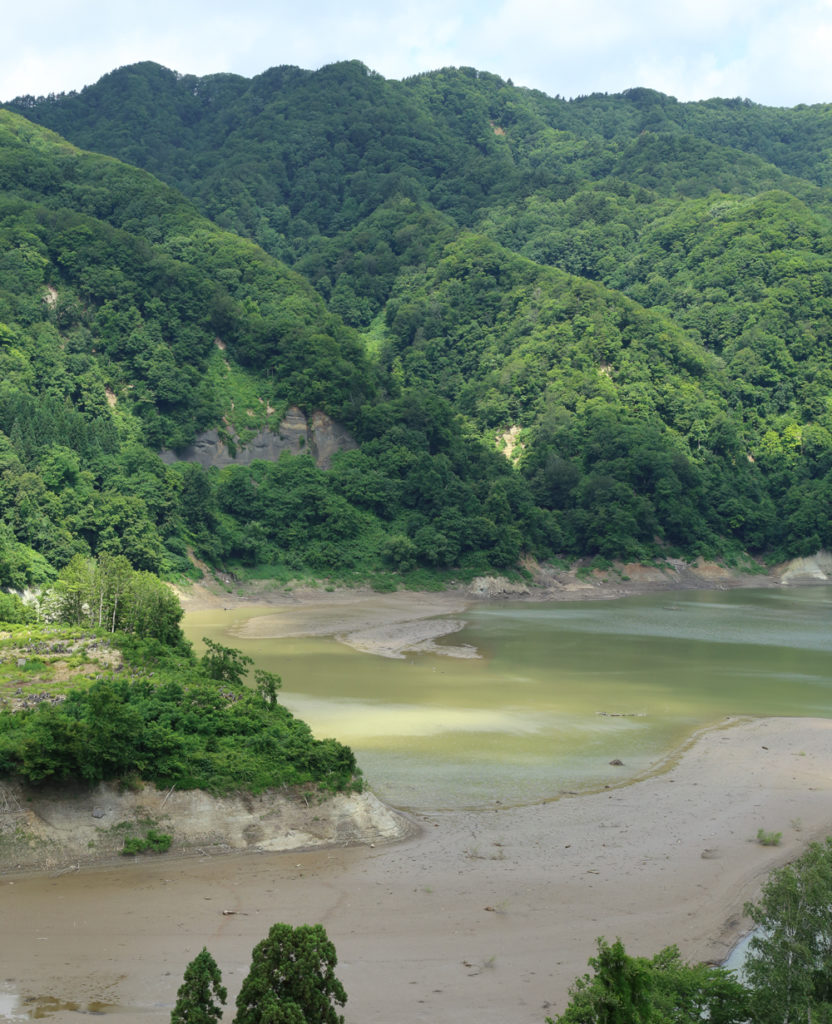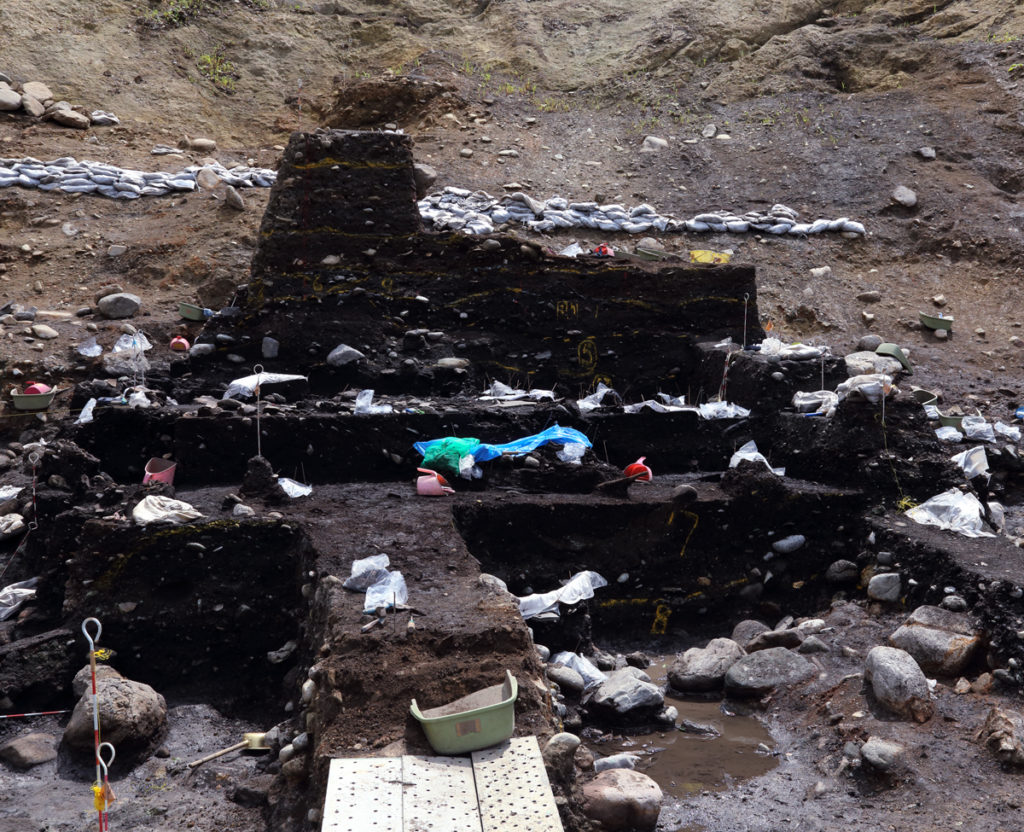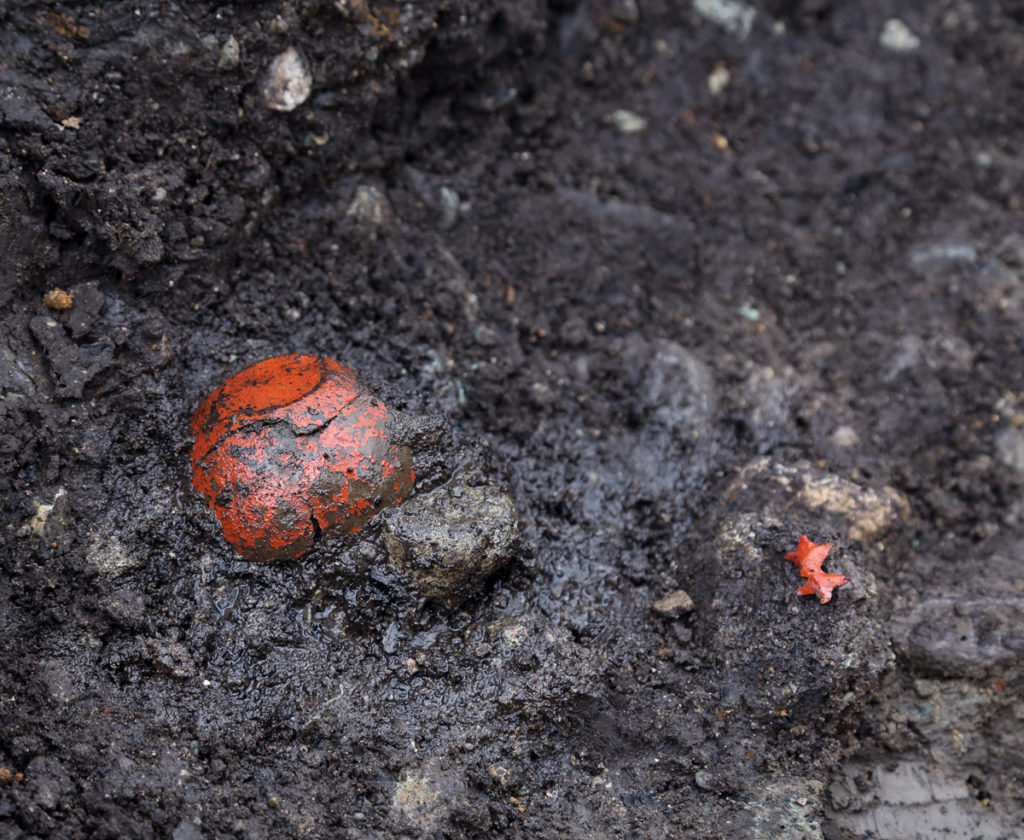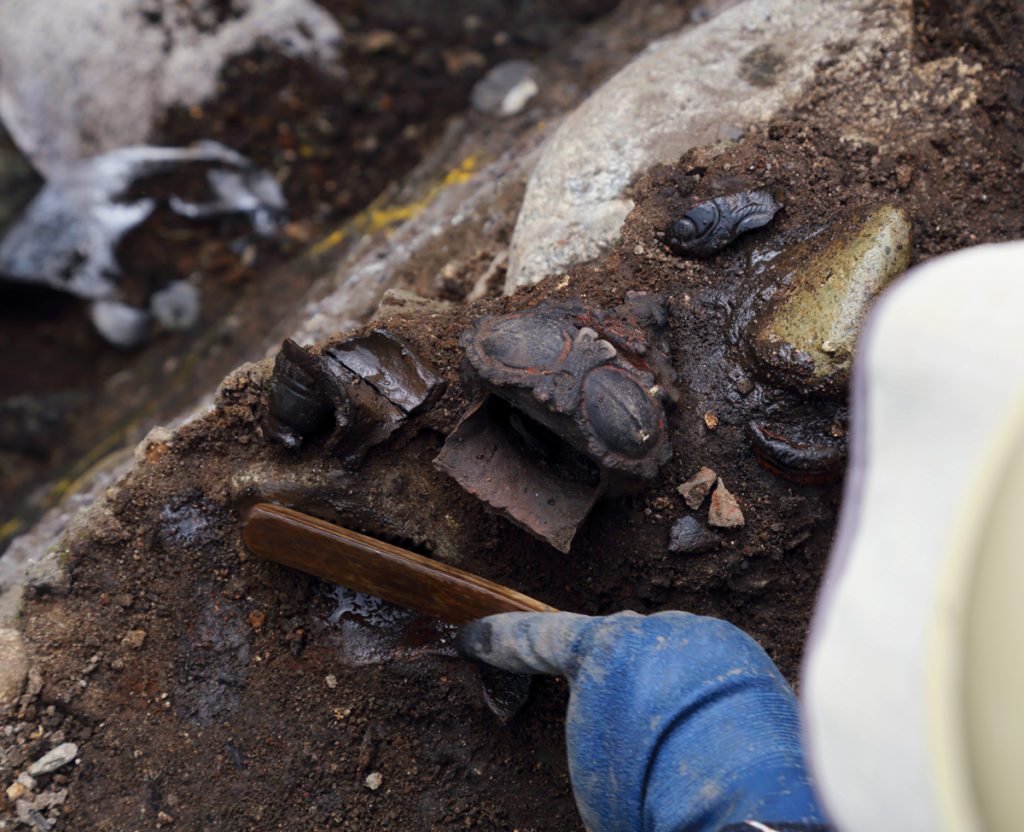Monogatari—Stories in a Sinking Village
I had arrived in Nishimeya Village, in the Nakatsugaru area of Aomori Prefecture. It was the gateway to the remaining virgin beech forest of Shirakami Sanchi, listed as a natural World Heritage site. The area map at hand showed the Iwaki River flowing northeast, from its source in Mt. Ganmori toward the southern foot of Mt. Iwaki. The Tsugaru Dam was under construction, and its completion meant an archaeological site would be buried under the reservoir. I was there with permission to visit the site while excavation was in progress. Where the Osawa River meets the reservoir is the Kawaratai Site, believed to be the ruins of a settlement dating from the latter half of the Late Jomon to the Final Jomon period (ca. 3,300–3,000 years ago). Excavation work had already been under way for the past five years or so.

I admired the verdant forest on the opposite shore as I stepped onto the bare ground where the grass had been removed for digging. Large buildings measuring over 10 meters in diameter and magnificent stone arrangements that were the remains of furnaces leaped into view on the river terrace. Taking care not to bother the researchers, I approached a furnace and peered inside, and sure enough, the earth was scorched to a reddish-brown color. The span of thousands of years is normally beyond imagination, but at an archaeological site, it’s in plain view between the layers of earth. Fascinating!
Just as this was going through my mind, someone told me I was standing on a 3,000-year-old surface of the earth. Instantly, I felt the present being overlaid by a point in time millennia ago. And as I grew accustomed to walking on the ground full of pits, it began to feel as if that stretch of time and space might not be too far away at all. If I only peeled away the layers of earth and extended my arm, that world might be within reach. . . On this day, I explored the plateau dotted with dwelling sites and the middens found in the slopes nearby. Before I knew it, the sun was setting, and I decided to save the rest for tomorrow.

The next morning, I resumed my survey of the site, watching my step, when word came that a dogu, or clay figurine, turned up in the western midden I rushed downhill. The spring water in the western midden had kept the earth moist, and the black soil produced horse chestnut and walnut shells and bark, and even lacquerware and decorative hair combs, all in surprisingly good condition. The vermillion hue was vivid and brilliant—clearly dewier than the artifacts I had seen before in museums. I realized that the surface was glossy from moisture, of course, but the colors peering out were fresh from Jomon just the same. Up close, there was no room for doubt: the fragment unearthed was the head of a goggle-eyed dogu. Next to the woman cautiously scraping away the mud with a wooden spatula were fragments of what looked like the dogu’s arms.

A curious fact about dogu has been on my mind. The figurines are rarely found in complete form. Most turn up with a broken limb or other body part. It isn’t clear whether the dogu broke naturally under pressure, or it was broken intentionally after having fulfilled some purpose. Either way, it certainly must be our duty to remember, pass on, investigate, and record the condition of each dogu at the time of excavation, before it is “restored” for preservation. I say this because folklore studies around the world support the notion that every objects are imbued with a spirit. In Japanese, the stories that are shared in any given region are called monogatari, written as “dialogue with objects.”
Each dogu figurine had a story, a monogatari—this is my hunch. The contents of the stories may have faded away, never to reappear without perhaps the discovery of a lost Jomon language. And yet, who can say it’s impossible? I gazed at the nameless broken dogu and began imagining the story imbued in the object.
<PAPERSKY no.52(2016)>

Jomon Fieldwork | Nao Tsuda × Lucas B.B. Interview
A conversation between ‘Jomon Fieldwork’ Photographer and writer Nao Tsuda and Papersky’s Editor-in-chief Lucas B.B. The two discuss the ways Jomon culture continues to play an important role in modern day Japan. The video was filmed at Papersky’s office in Shibuya in conjunction with Tsuda’s exhibition “Eyes of the Lake and Mother Mountain Plate” held at the Yatsugatake Museum in Nagano.
Nao Tsuda | Photographer
Through his world travels he has been pointing his lens both into the ancient past and towards the future to translate the story of people and their natural world.
tsudanao.com











